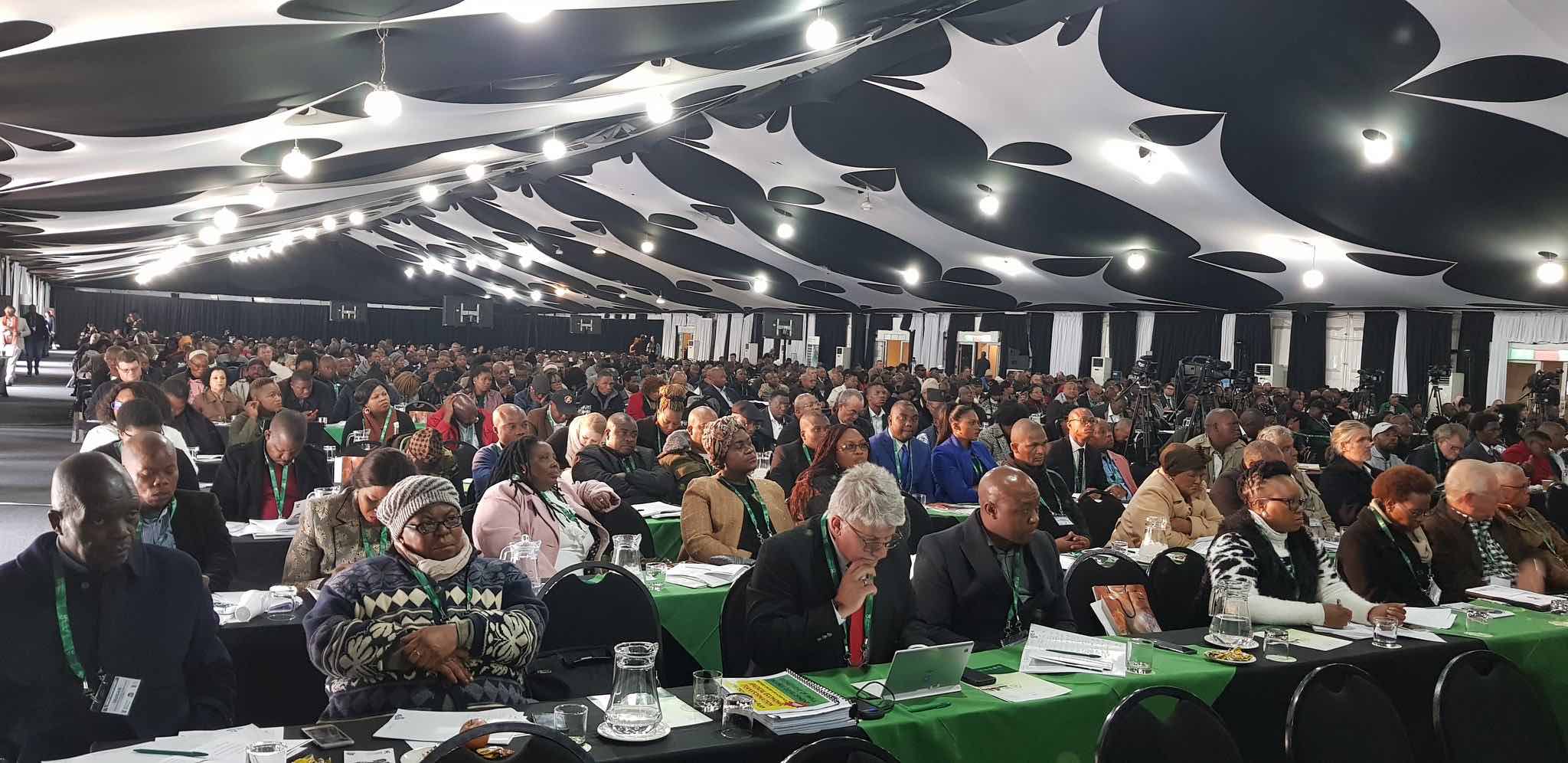
28 Sep Mantashe listening with only half an ear
Public participation in the mining sector has improved but there is still a long way to go to gain stakeholder trust, writes Tholakele Nene

#Right2SayNO: Members of the Amadiba Crisis Committee insist their objections are not being heard. Photo: ACC
It is hard to ignore the efforts taken by Mineral Resources Minister Gwede Mantashe to clean up an office that has for years been associated with corruption and maladministration.
#MineAlert, the app that encourages citizen participation in mining development processes by providing a centralised platform for users to access, track and share information and documents on mining licences, watched with interest as the minister undertook seven months of national consultations prior to gazetting the new Mining Charter.
This included engagement at the mining summit in July 2018, in an effort to ensure that the right to consultation enshrined in the Mineral and Petroleum Resources Development Act (MPRDA) was realised. His department also extended the deadline for comments on the charter to give stakeholders enough time to comment, said spokesperson Nathi Shabangu.
It was important for the ministry not to “rush the process” and to ensure that “adequate consultation” had taken place to avoid the mistakes of the past where communities felt sidelined, Shabangu told #MineAlert.
The Department of Mineral Resources has taken action to address some of the concerns raised during the consultation processes, including allegations of double-granting of licences, improper application of Section 54 of the Mine Health and Safety Act and backlogs in the issuing of licences, particularly in Mpumalanga.
In September the department shut down the Mpumalanga office following corruption allegations and backlogs in issuing licences. Other priority areas raised by stakeholders included Limpopo, where the office has recently been reopened, and North West.
On the weekend of September 21 to 23 Mantashe met mining-affected communities in northern KwaZulu-Natal and visited the Xolobeni community in Mbizana, Eastern Cape, where violent clashes broke out between members of the Amadiba Crisis Committee opposed to mining and riot police.

A mining summit was held in July 2018 following extensive national consultations with mining-affected communities on the new Mining Charter. Photo: DMR
Enabling environment
While Mantashe and the department are moving in the right direction by promoting public participation, #MineAlert has tracked the increase of mining developments across the country: the number of data points on our mapping platform has increased from 3,137 in January 2018 to more than 3,400 in September 2018.
The enabling environment for the extractives industry raises cause for concern particularly in the growth in applications in and/or around strategic water zones as well as protected areas such as Mabola and St Lucia.
Recognising the importance of sustaining freshwater reserves, #MineAlert is investigating further mining risks to these areas. The aim is to work with stakeholders to expose the effects of mining on clean water in realtime, and to reduce the risks that unrehabilitated and abandoned mines pose to water and the health of people living in those areas.
Environmental compliance
Last year #MineAlert ran a series of investigations that showed an estimated R60-billion was sitting in mine rehabilitation funds across South Africa for mines that might never be closed. The investigation exposed a failed system of mine closure in which there is little oversight, monitoring and compliance by DMR.
The department is failing to protect the environment and affected communities by not ensuring that companies put aside sufficient rehabilitation funds, and is not making sure that companies clean up once a mine is closed. Failure to do this results in negative social and environmental impacts for communities left to live in the mess created by mining companies (see Coal mines leave a legacy of ruin).
As a result of these investigations, the regulations that govern mine closure are being revised and are expected to be gazetted in November 2018 (see revised regulations published on 21 September 2018)
The trend of extracting precious minerals and leaving the mess for others to clean up has not changed, however, as our investigation into the liquidation of Mintails showed this month. Mintails, an Australian company, leaves behind a R460-million environmental liability that the South African government will have to cover and neighbouring communities have to live with.
This investigation triggered scrutiny by the Parliamentary Portfolio Committee on Mineral Resources in mid-September. Committee members visited the Mintails site in Gauteng, and asked the provincial department to explain how the clean-up costs would be funded (see Parliament probes Mintails toxic legacy).
Mantashe and the DMR need to extend the same energy they are applying to cleaning up office to monitoring and compliance in the mining sector. Is there any point in nurturing public participation if they are listening with only half an ear?
Tholakele Nene is an Associate of Oxpeckers Investigative Environmental Journalism and manager of the #MineAlert app. Use #MineAlert to track and share mining licences, and to explore mining threats to South Africa’s water resources
